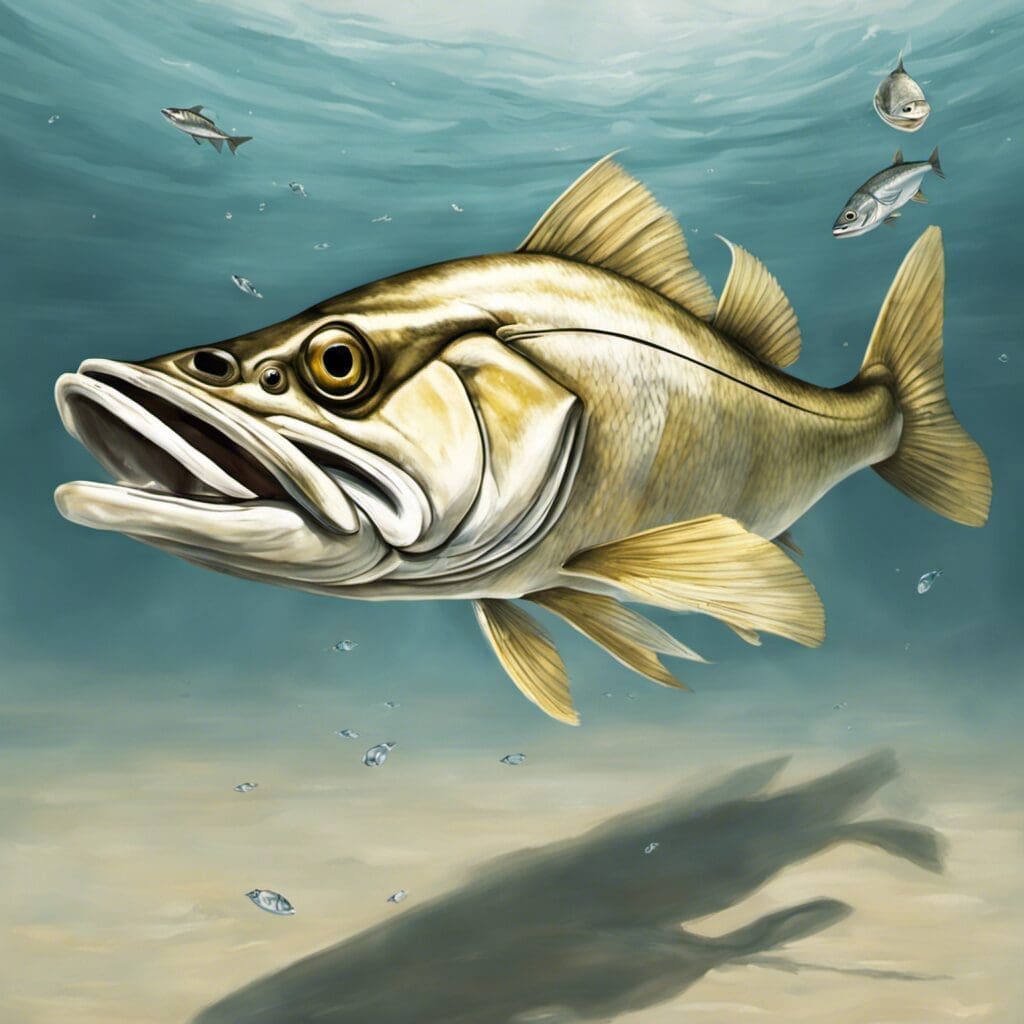Introduction
The Snook, with the scientific name of Centropomus Undecimalis, belongs to the family of Centropomidae. It is a unique marine species renowned for its striking figure and game fish status, which has led it to be a favorite amongst many anglers globally.
Conservation Status
Currently, the Snook is listed as ‘Least Concern’ on the International Union for Conservation of Nature (IUCN) Red List. Efforts to maintain Snook populations include seasonal fishing regulations and size limits to ensure the conservation of the species.
Statistics
| Attribute | Average | Range |
|---|---|---|
| Length | 50 cm | 18-48 inches |
| Weight | 5 kg | 1-20 kg |
| Average Lifespan | 15 years |
Distribution
Snooks are primarily located in the tropical and subtropical regions of Florida, making them the state’s most popular light tackle game fish. Their migration pattern usually involves moving inshore to spawn during the warmer months and then returning to the open sea when the water cools.
Habitats
These fish mainly thrive in clean, moving water with structures like bridges, piers, or woody debris where they can find cover. They require a temperature range of about 60-89 degrees Fahrenheit and usually reside at depth ranges of 0-20 meters.
When and Where to See
Snooks are most active around dusk and dawn. They have a tendency to feed in shallow waters and are often seen near shorelines during warm periods.
Best Fishing Locations
The likes of the Florida coastal areas, especially Miami, Tampa Bay, and Charlotte Harbor, are renowned for Snook fishing. However, if an exact location isn’t known, look for Snooks in areas with structures, such as around seagrass beds or mangroves.
How to Catch
Live bait, specifically pinfish, pilchards, or finger mullet, is an effective way to attract Snook. Anglers often use fly fishing or trolling techniques to catch these fish. Early morning or late evening during the warmer months is the most effective time to fish for Snook.
Identification Guide
Snooks are instantly recognizable by their pronounced lateral line, protruding lower jaw, and large mouth. They have a silvery-green color and two distinct dorsal fins.
Culinary
Snook meat is tender, sweet, and has a distinct flavor. The filets can be baked, grilled, or even pan-fried. Given their delicate flavor, the meat is best enjoyed simply seasoned.
Additional Information
Snooks are carnivorous with smaller fish, crustaceans, and cephalopods forming the main part of their diet. The main predators of Snooks include larger fish species, birds, and humans due to fishing. In Florida, they are renowned for their fight and are a prized possession amongst anglers.
References and Further Reading
For more in-depth information on Snooks, consider consulting marine fishing handbooks or take a look at the University of Florida’s IFAS Extension’s resources about Snook fishing and management

